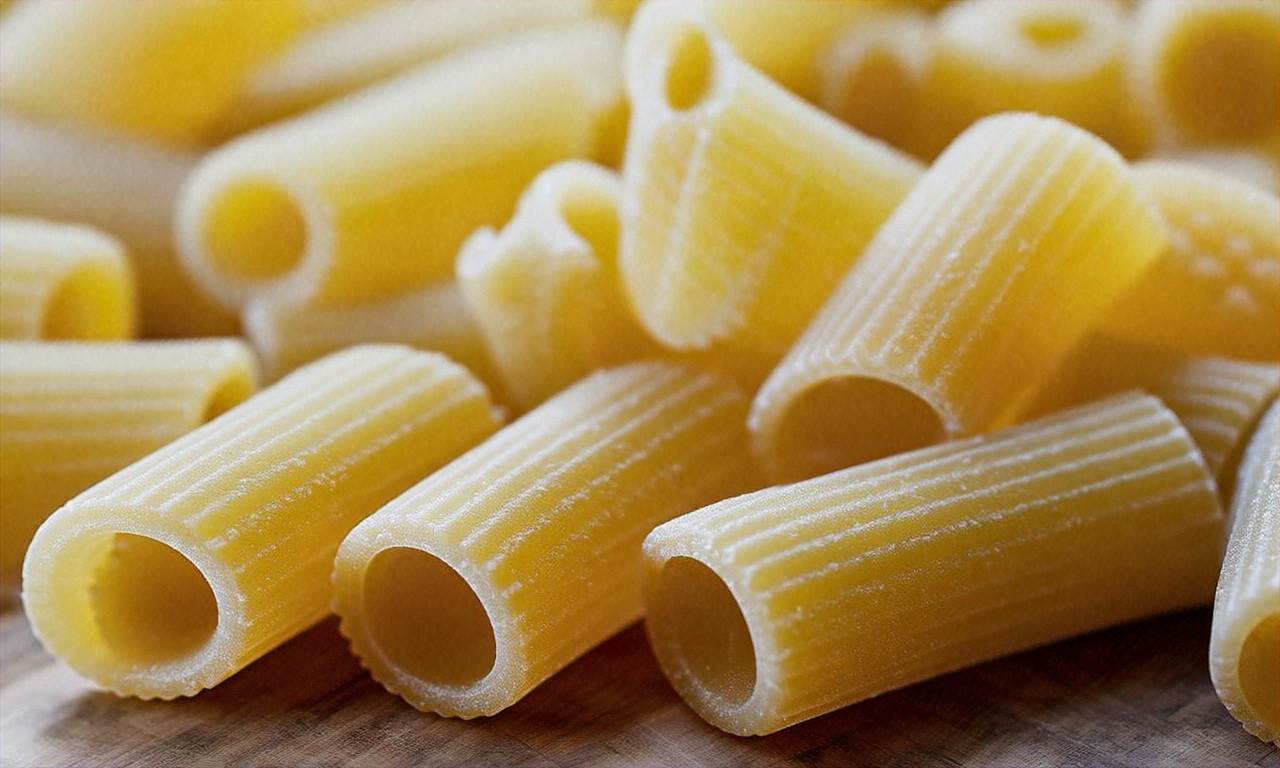Rigatoni Pasta: A Delicious Journey Through Italy’s Culinary Landscape
Rigatoni, the beloved Italian pasta shape, has been gracing dinner tables and restaurant menus for generations. This versatile and hearty pasta variety has captured the hearts of food lovers worldwide. In this article, we’ll dive deep into the world of rigatoni pasta, exploring its history, characteristics, popular dishes, and even how to make it from scratch. So, grab a fork and join us on this mouthwatering adventure!
The Origins and History of Rigatoni
Rigatoni pasta, like many Italian culinary traditions, has a rich and fascinating history. The name “rigatoni” comes from the Italian word “rigato,” which means “ridged” or “lined.” This refers to the pasta’s distinctive ridged exterior, which is perfect for clinging to sauces and enhancing flavor.
Originating in central and southern Italy, rigatoni has been a staple in Italian cuisine for centuries. Its sturdy shape and hollow center make it ideal for hearty sauces and baked dishes. While the exact date of its invention is unclear, rigatoni has been documented in Italian cookbooks dating back to the 19th century.
Characteristics of Rigatoni Pasta
What sets rigatoni apart from other pasta shapes? Let’s explore the unique features that make this pasta so special:
1. Shape: Rigatoni are tube-shaped pasta, typically 1.5 to 2 inches long, with a slightly curved form.
2. Ridges: The exterior of rigatoni is adorned with ridges, which help sauces adhere to the pasta.
3. Hollow center: The large, hollow interior of rigatoni allows it to capture sauce and small ingredients, making each bite flavorful.
4. Thickness: Rigatoni has thicker walls compared to other tubular pasta like penne, giving it a satisfying bite and texture.
These characteristics make rigatoni pasta an excellent choice for a wide variety of dishes, from simple tomato-based sauces to complex baked casseroles.

Popular Rigatoni Pasta Dishes
Rigatoni’s versatility shines through in the many delicious dishes it stars in. Here are some popular recipes featuring this beloved pasta shape:
1. Rigatoni all’Amatriciana: A classic Roman dish featuring a spicy tomato sauce with guanciale (cured pork cheek) and pecorino cheese.
2. Rigatoni alla Vodka: A creamy tomato-based sauce with a splash of vodka, often including pancetta and peas.
3. Baked Rigatoni: A comforting casserole-style dish with meat sauce, cheese, and sometimes vegetables.
4. Rigatoni Carbonara: A twist on the classic spaghetti carbonara, using rigatoni instead for a heartier meal.
5. Rigatoni with Sausage and Broccoli Rabe: A flavorful combination of spicy Italian sausage and slightly bitter broccoli rabe.
These dishes showcase the versatility of rigatoni pasta and its ability to pair well with a variety of ingredients and flavors.
Making Rigatoni from Scratch
While store-bought rigatoni is readily available, there’s something special about making pasta from scratch. Here’s a simple recipe to try at home:
Ingredients:
– 2 cups semolina flour
– 2 large eggs
– 1/4 cup warm water
– 1/2 teaspoon salt
Instructions:
1. Mix the flour and salt in a large bowl.
2. Create a well in the center and add the eggs and water.
3. Gradually incorporate the flour into the liquid until a dough forms.
4. Knead the dough for 10 minutes until smooth and elastic.
5. Let the dough rest for 30 minutes, covered with a damp cloth.
6. Roll out the dough and cut into strips.
7. Use a pasta machine or specialized rigatoni maker to form the tubes and ridges.
8. Allow the pasta to dry for 1-2 hours before cooking.
Making homemade rigatoni pasta can be a fun and rewarding experience, allowing you to appreciate the craft behind this beloved Italian staple.
Rigatoni Pasta in Modern Cuisine
While rigatoni has its roots in traditional Italian cooking, it has found its way into modern and fusion cuisines as well. Chefs around the world are experimenting with new flavor combinations and innovative techniques using rigatoni as their canvas. Some exciting modern takes on rigatoni pasta include:
1. Vegan rigatoni dishes using plant-based cheeses and meat alternatives
2. Fusion cuisines incorporating rigatoni with non-Italian flavors and ingredients
3. Gluten-free rigatoni options made from alternative flours like chickpea or rice
4. Cold rigatoni salads perfect for summer picnics and barbecues
The versatility of rigatoni pasta continues to inspire chefs and home cooks alike, ensuring its place in the culinary world for generations to come.
Conclusion: Celebrating the Humble Rigatoni
From its humble beginnings in central and southern Italy to its current status as a global pasta favorite, rigatoni has certainly made its mark on the culinary world. Its unique shape, satisfying texture, and ability to hold onto sauces make it a go-to choice for pasta lovers everywhere.
Whether you’re enjoying a classic rigatoni all’Amatriciana in Rome, experimenting with a new fusion recipe at home, or attempting to make your own rigatoni from scratch, this versatile pasta shape is sure to delight your taste buds. So the next time you’re in the mood for pasta, why not give rigatoni a try? You might just discover your new favorite dish!




